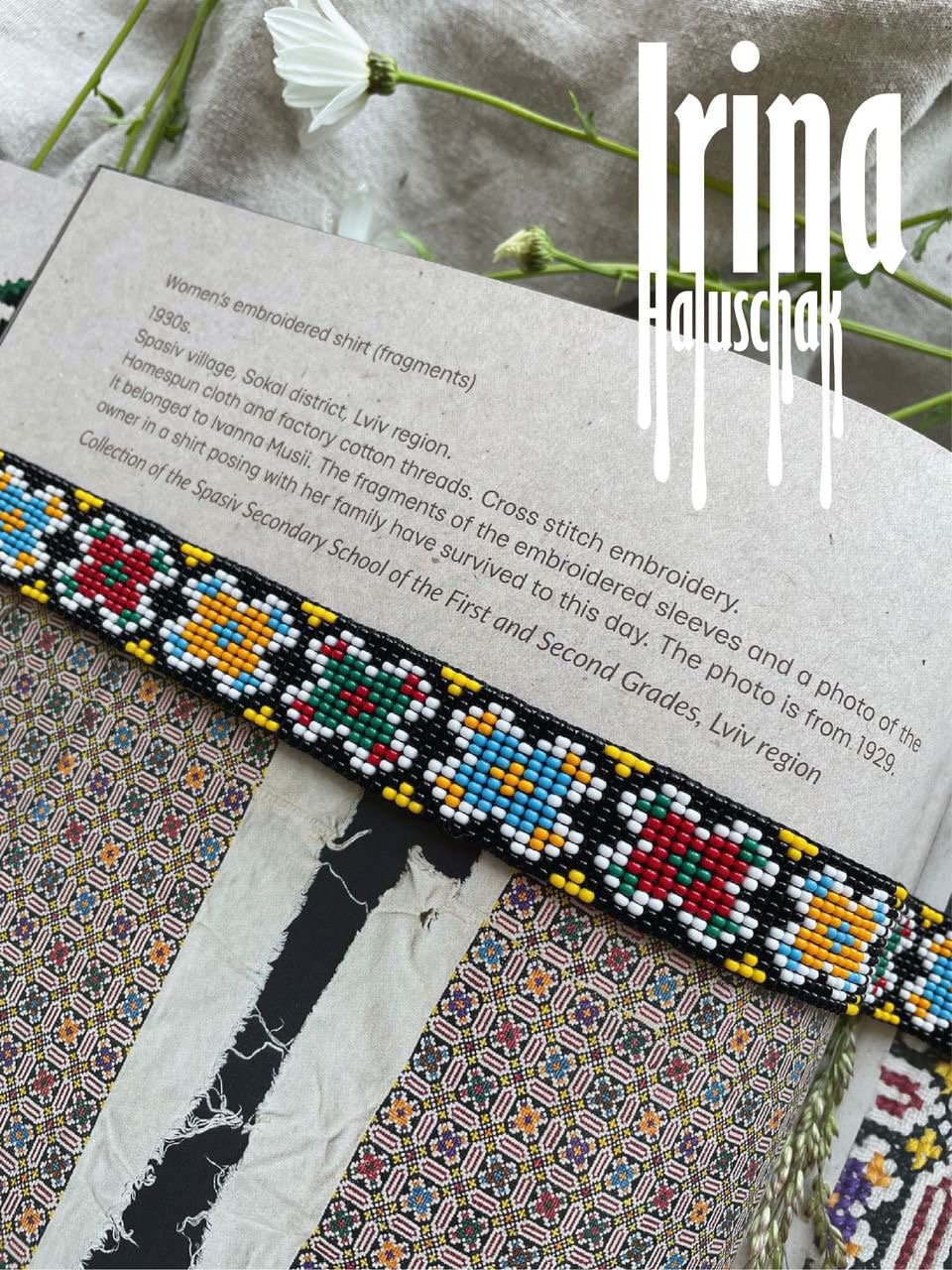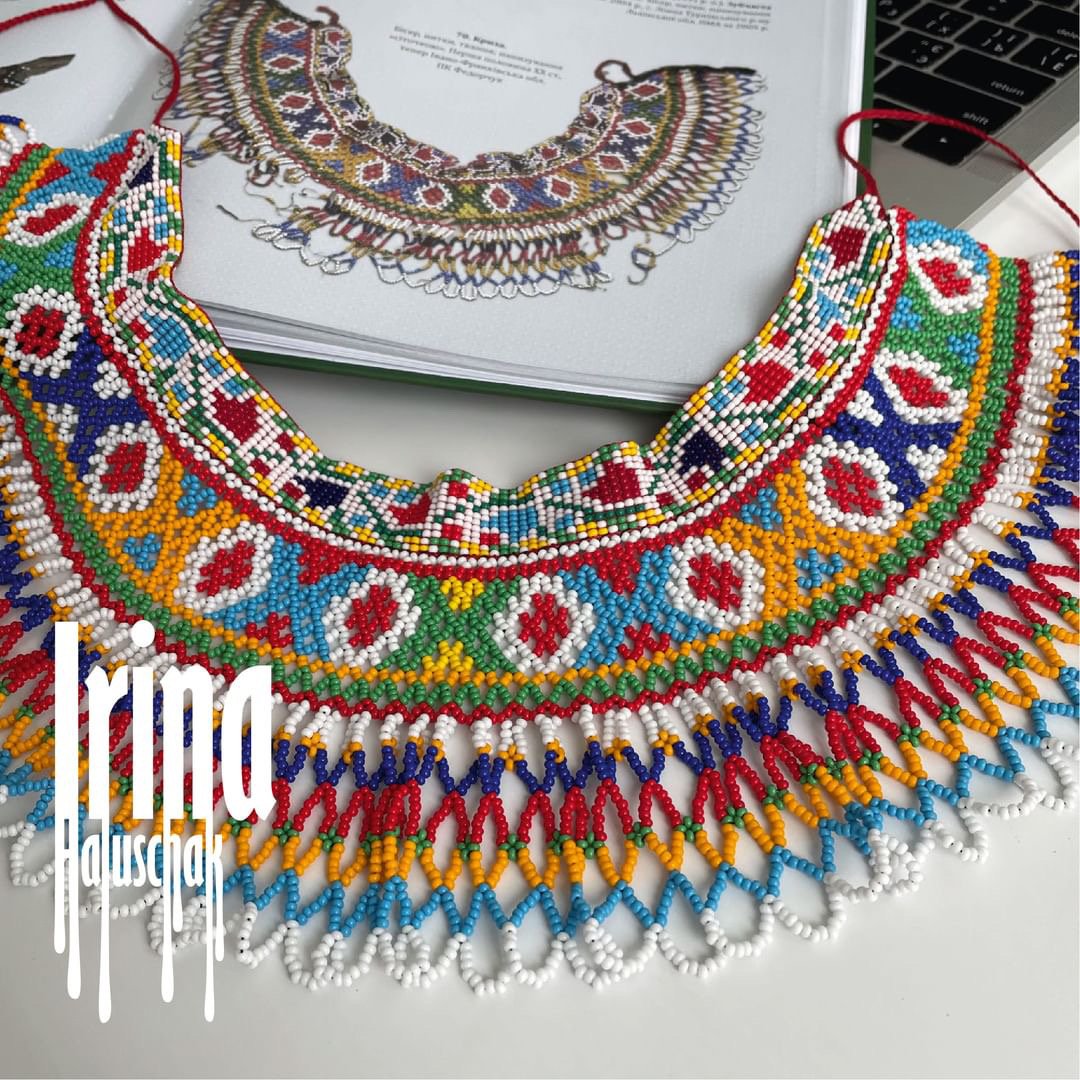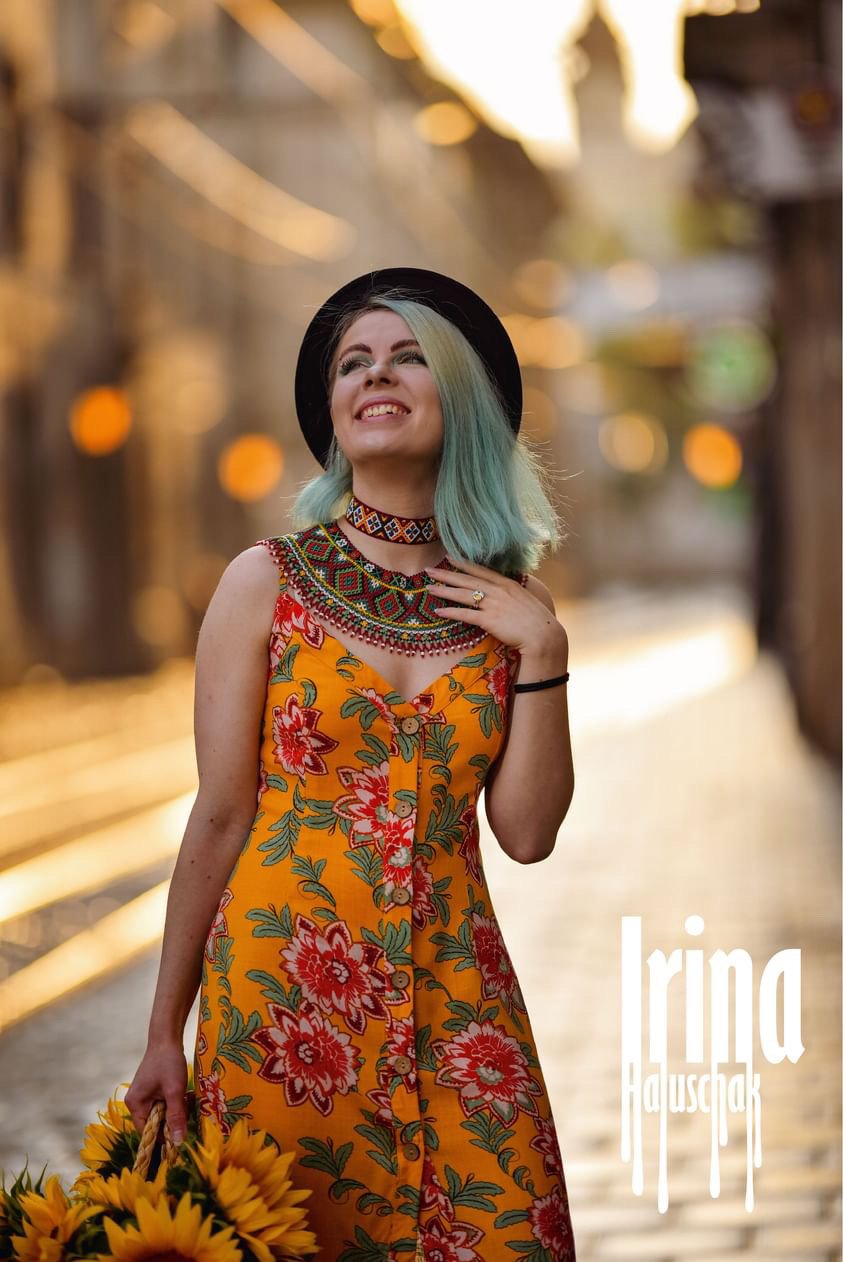Meet Irina Haluschak: a Ukrainian beadwork artist
Throughout the centuries, Ukrainian women have adorned themselves with an array of beautiful beads. These beads, crafted from materials like amber, coral, pearls, and Venetian glass, have been a staple of traditional attire. The emergence of folk beadwork, especially in necklaces, dates back to the early 19th century and quickly became a popular accessory in female costumes. In Ukraine, the variety of traditional necklaces is vast, with designs varying significantly by region. One of the most distinctive and unique styles comes from Western Ukraine. The Krivulka, in particular, deserves attention. It is characterized by its collar-like form, which can extend up to 20 cm in width. The Krivulka is renowned for its intricate geometric patterns, including triangles, squares, crosses, and diamonds, all interwoven with lines, showcasing the rich cultural heritage and artistic craftsmanship of the Lemkivshchyna region.
Continuing this legacy and bringing it into the global spotlight is Irina Haluschak, an artist dedicated to making Ukrainian beaded jewelry more accessible worldwide. Born in Ternopil, a city in western Ukraine, Irina is deeply invested in the cultural heritage of her craft. She delves into archives and history books to educate others about the cultural significance of beaded jewelry. Her work is a testament to the preservation of traditional Ukrainian techniques and patterns, showcasing the rich history and artistry of her homeland through her exquisite jewelry designs.
Please take a moment to read the interview with her and visit her Instagram page to learn more about her unique designs.
What is your definition of fashion?
Fashion is the face of time.
How would you describe fashion in Ukraine?
Fashion in Ukraine is very mobile now, young people dress very differently and boldly. I cannot say this about the older generation.
What was the greatest lesson you ever received as a beadwork artist?
Previously, living in a small town, I thought I knew everything. However, after moving to Lviv, everything changed. I had the opportunity to communicate with creative people from different fields and see how they grow. It fascinated me, and I found role models. This is the biggest lesson I received—to never stop growing, to learn new things, and to look at the world with an open mind. It is a mistake to think that you have reached the top.
What and who inspires you? Are your designs inspired by any particular community/ethnic group from Ukraine?
I began beadwork at a relatively young age, around 15-16 years old. Crafting is a family tradition in my household, with both my mother and grandmother being involved in embroidery. Consequently, my passion for crafting and all things traditional has been nurtured since childhood. My journey in reconstructing ancient Ukrainian jewelry started when I acquired the book "Ukrainian Folk Beaded Jewelry" by Ukrainian ethnographer Olena Fedorchuk. This book, filled with photographs of decorations from museum exhibits, served as my starting point in creating folk jewelry. My interest predominantly lies in jewelry made of beads from the Lemkivshchyna, Boykivshchyna, Bukovyna, and Hutsulshchyna regions, all situated in western Ukraine.
Why is traditional craftsmanship important to you?
It's hard to say when it all began—it was just a childhood curiosity and hobby. I didn't expect it to go this far. It was only through working on it that I began to realize the importance and significance of the process. Crafting is a difficult and meditative process that isn't for everyone. It requires constant engagement and attention. The souls of people are hidden in these folk motifs.
Are there any legends or stories about Ukrainian traditional embroidered designs?
My opinion may not be widely accepted, but I oppose mystification. Historically, clothes were just garments, embellished with embroidery to signify one’s social status and wealth. The same holds true for jewelry; it was simply adornment. It was beautiful and not available to everyone. Girls enjoyed adorning themselves, much as they do today.
What is the meaning of the patterns?
People in ancient times illustrated what they observed in their surroundings, leading to the incorporation of plant motifs such as leaves, berries, and flowers in the ornaments. However, geometric patterns predominantly prevail in these designs.
If you could describe Ukrainian traditional embroidery in 3 words, what would they be?
Wealth, power, variety of techniques.
How do you want people to feel when they wear your jewelry?
I want people to feel as though they can touch ancient times and wear jewelry similar to what their grandmothers used to wear. Many ask to have copies made of family jewelry or order pieces that are characteristic of the regions their ancestors came from. These necklaces are about preserving memories.
What is your favorite material and why?
I use Czech beads in my work because their shape closely resembles those used a century ago. In the past, smaller beads were preferred, but nowadays, it's challenging to find such tiny beads.
What can the fashion industry do to be more sustainable? How can we change the behavior of consumers to make more conscious purchasing decisions?
The fashion industry should prioritize quality above quantity and transparently convey the true cost of items. Particularly, the issue of thousands of individuals laboring under inhumane conditions in factories needs to be addressed.
How do you think fashion will change in the future?
If we consider the distant future, I believe that clothing will either be virtual or predominantly minimalist. In such a scenario, garments made from quality fabrics will likely become luxury items, not accessible to everyone.











